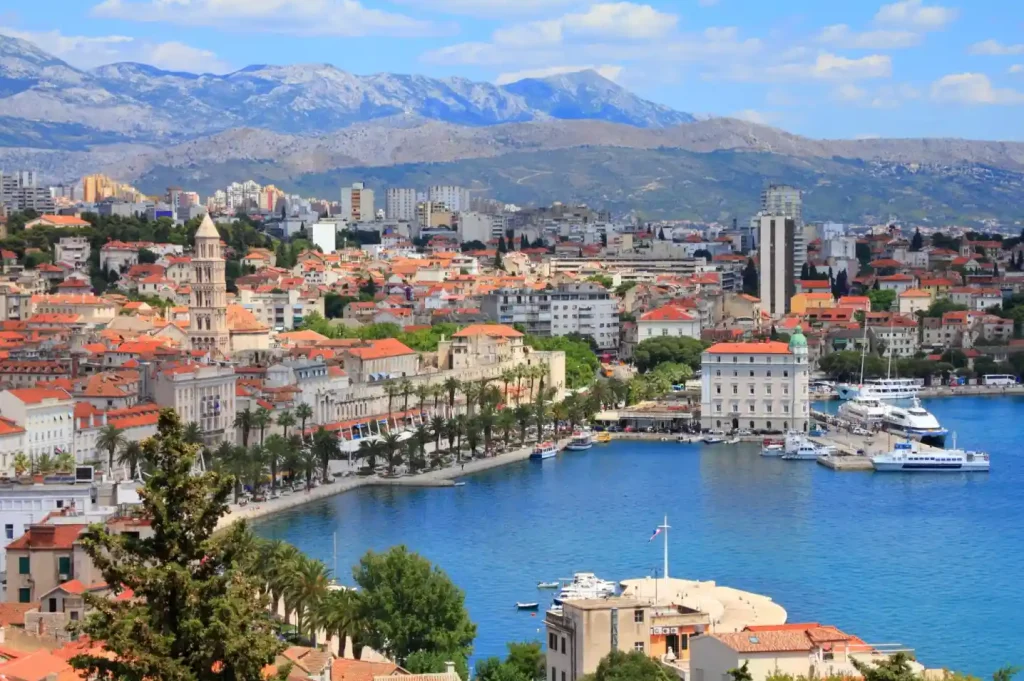As I rarely do, I arrived in Split fully prepared. I had a schedule, a list of landmarks, and a firm plan to be a productive, well-organized traveler. Then I met Alen, and my plans evaporated faster than the foam on a fresh espresso. “You’re doing it wrong,” he said, shaking his head at my neatly highlighted map. “Split isn’t for planning—it’s for wandering.” With that, I found myself drifting through sunlit alleys, following the scent of sea breeze and grilled fish, and falling straight into the chaotic, beautiful rhythm of the city.
Diocletian’s Palace: The Heartbeat of Split
Let’s get one thing straight—Diocletian’s Palace isn’t just a historical site. It’s the living, breathing soul of Split. Built by a Roman emperor who really knew how to retire in style, the palace isn’t some quiet museum—it’s a thriving part of city life, where locals drink coffee against thousand-year-old walls, musicians play under archways built for gods, and a simple afternoon stroll feels like time-traveling with gelato in hand. Ivana, a local guide, told me that the palace had underground tunnels that once housed soldiers, secret passages built for royal escapes, and even a well that was rumored to grant wishes. Naturally, I made one. Still waiting to see if it works.
Hidden Beaches and Secret Swimming Spots
Sure, Split has famous beaches, but why settle for the obvious ones when the locals have better secrets? I followed Josip, an old sailor with a sun-bleached hat and the kind of casual wisdom you only get from living by the sea, toward a tiny cove past Marjan Hill. “No tourists, no noise,” he promised. “Just the sea, the sun, and maybe a few lazy fish.” He wasn’t wrong. The water was so clear it looked artificial, the beach was carved right into the limestone cliffs, and the only sound was the whispering waves against the shore. Would I call it the best swim of my life? Yes. Would I tell you exactly how to get there? Not a chance.
Sailing and Island-Hopping the Split Way
Split isn’t just a city—it’s a gateway to the Adriatic’s most stunning islands. One morning, I found myself hopping onto a boat with Marko, who swore that the only way to understand Split was to see it from the sea. We sailed past Brač, Šolta, and small hidden islands where cliffs rose out of the water like ancient fortresses, stopping in tiny fishing villages where time seemed to move slower, the wine flowed freely, and the seafood tasted fresher than anything I’d ever had. By sunset, Marko handed me a glass of locally-made rakija, pointed at the golden horizon, and said: “Now you understand Split.” And honestly? I did.
The Local Magic That Makes Split Special
There’s something about the people in Split—a kind of effortless warmth, humor, and ability to turn every meal into a festival. I spent an evening listening to Mate, a storyteller who seemed physically incapable of speaking without dramatic hand gestures, share tales of ancient shipwrecks, secret caves, and a legendary fisherman who once fought off pirates with nothing but an oar and sheer determination. Was any of it true? Who knows. Did I care? Not at all. Because in Split, every story feels real—whether it happened or not.
Final Thoughts: Why Split Will Stay With Me Forever
Split isn’t just about beaches or history. It’s about rhythm—the pulse of the city, the way the waves kiss the shore, and the easy, sun-soaked laughter of the locals who know they live somewhere special. I came here expecting an itinerary, but I left knowing Split is best experienced without one. And honestly? I wouldn’t have it any other way.

